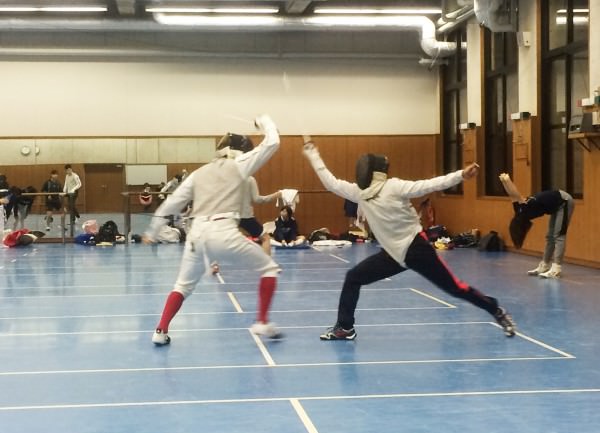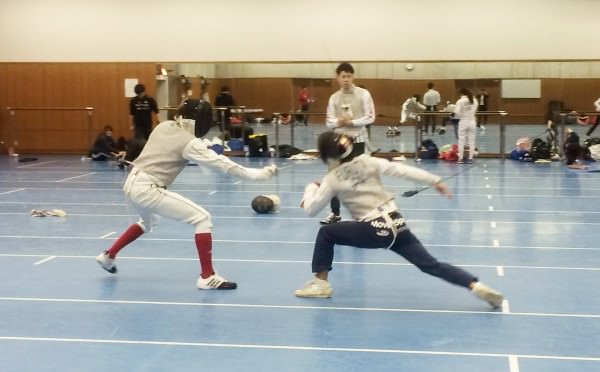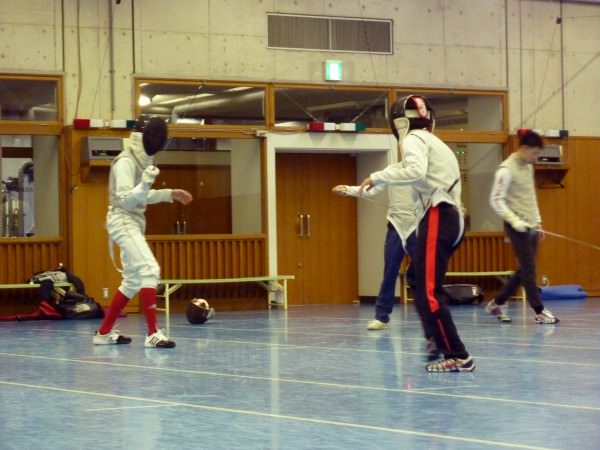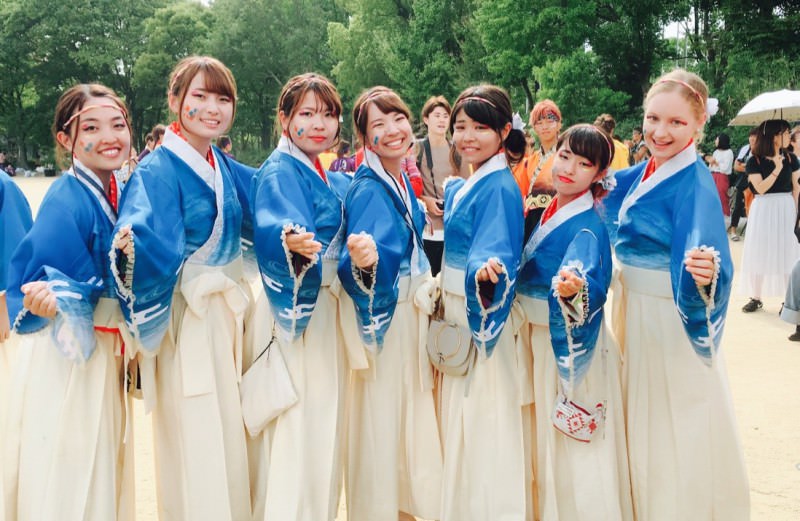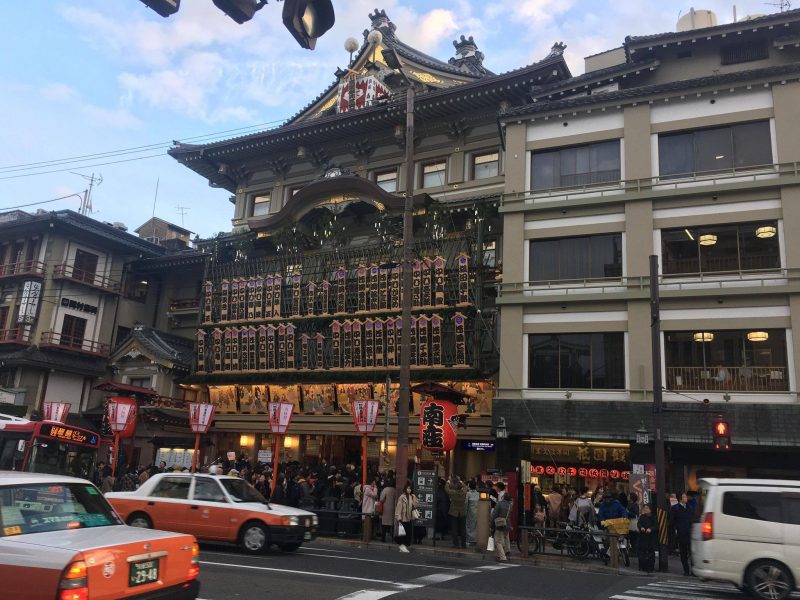Playing Sports in a Japanese Club: Fencing
2017.02.16
Practice, tournaments, and friends on the Doshisha fencing team
Q: What is the practice schedule like in the fencing club?
A: We meet every day but Monday. Everyone gets together in the fencing gym at around six or six thirty, and we usually start out by stretching individually and sparring. There are occasionally times when we all practice together and do the same thing, but it’s mostly very similar to fencing practice in America, with little group work.
The fencing group meets on the weekends, too, on Doshisha’s Shinmachi campus, but I only attend twice a week. It’s nice, because I’m able to go out and travel around Japan on the weekends.
Q: What do you find difficult about the fencing club?
A: The fencing club isn’t all that strict, but the hierarchy of clubs is difficult. At Cornell, I’m definitely not required to respect the upperclassmen in the fencing club just because they’re older. (laughs) We’re more like brothers, really. So it’s hard for me to adapt to using different forms of polite Japanese for different people in the fencing club here. I just wasn’t used to it.
There are things that I never learned in class, too: how “arigato gozaimasu” gets shortened to “azassu” (“Thank you”) among club members, or slang like, “uisu” (a shortened version of “ohayo gozaimasu,” or “good morning”).
Q: What do you enjoy most about being in the fencing club?
A: I really like going to competitions with everyone, and cheering on the other members of the club, how we really feel like a team.
Q: Do you often go on trips to tournaments or competitions at other schools?
A: I’ve been to two competitions so far, but neither of them were overnight stays. One of them was to Yamazaki, between Kyoto and Osaka. Since the competitions are pretty close, we just travel by train. Sometimes the other members and I will go out for meals after competitions or practice, too.
On life in Japan, and lessons from fencing
Q: Do you have many other opportunities to practice Japanese outside of school or club activities?
A: I first came to Japan in June on a US government program called the Critical Language Scholarship, and during that time I stayed with a homestay family in Hikone. I came back for study abroad with KCJS in September, and I’ll go back home in December, but until then I’m staying with a family again, so I can speak Japanese at home with them. They have two kids, one in elementary and one in middle school. Most of the time everyone is pretty busy, so we usually see each other at mealtimes.
Q: How do you think fencing has helped you grow?
A: Oh, in so many ways. (laughs) Some of the words of my favorite coach have been really helpful for me, even doing my homework. “One touch at a time,” is pretty useful advice outside of fencing too, just to take things one step at a time.
Fencing has also absolutely improved my independence, my self-reliance. Another really important thing I think fencing has taught me is how to lose. When first started, I didn’t know how to bring myself to practice the next day after I’d lost a match. After losing a lot, though, I started to learn how to handle the experience with grace, and I started winning more, too!
On the Kyoto experience
Q: What have you enjoyed the most about studying in Kyoto in particular?
A: I’m personally really interested in shrines, and Kyoto is full of shrines and temples and history, so there’s a lot to explore. I’m writing my final paper on Shinto at the moment, actually—on the practice of rebuilding shrines anew after a certain number of years.
It was a friend I met in May that got me interested in Shinto. He’s a grad student in political science, and we became buddies during my first trip to Japan. One of his hobbies was collecting stamps and signatures from shrines*. I went with him a few times, and that sparked my interest.
*Shrines and temples offer small booklets with which pilgrims can “collect” the unique stamps from each shrine, or the signature of the monks.
Q: What would you say to students who are considering studying abroad in Kyoto now?
A: Well, to put it simply, “It’s great, and you should definitely come!” But maybe that’s too simple. (laughs) Coming to Kyoto is especially interesting, I think, because the city has a great mix of the modern and the historical. It’s convenient, too, because it’s easy to travel to other places from Kyoto. Kobe and Osaka aren’t so far away.
I’m already planning to come back in the summer! Hopefully in the future I’ll be able to come back to work, too.






